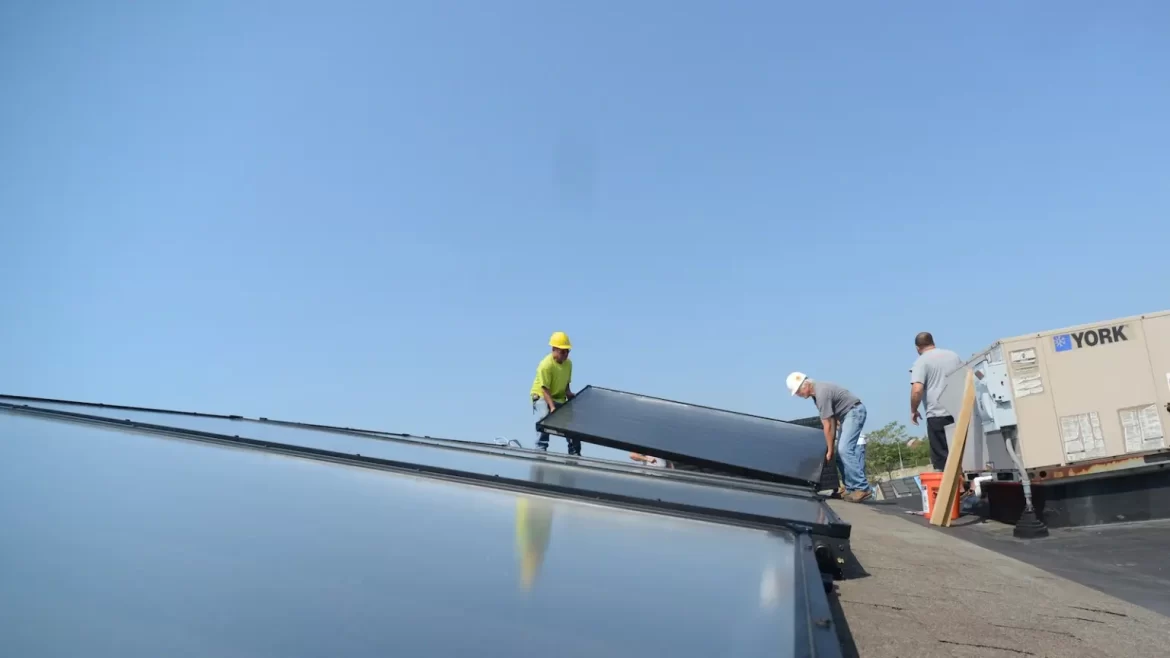How California is casting a cloud over residential solar

How California is casting a cloud over private solar
Driven by California, housetop sun powered establishments are balanced to drop 12 percent broadly this year. It’s the primary decay since 2017.
The past five a long time have been something of a obscure for the group at Vitality Concepts Endeavors. The company, which has been introducing sun based boards in and around Fresno, California, since 1992, might scarcely keep up with request as customers grasped the innovation in ever-greater numbers. Each year was busier than the last.
Until 2023, when commerce plunged. Concurring to promoting chief Carlos Beccar, deals fell from as numerous as 40 frameworks a month to 10, or less. “It’s been an mind blowing downturn,” he said. “We laid off half of our staff and we’re probably not done.”
California is driving what investigators anticipate to be the primary year-over-year decrease in private sun based establishments since 2017. Vitality experts at Wood MacKenzie expect that the state, which accounts for the bulk of the Joined together States advertise, will see a 41 percent drop in 2024. Across the nation, they anticipate a 12 percent contraction.
“We’re anticipating the primary half of the year to be lovely extreme for installers,” said Zoë Gaston, a foremost investigator for private sun based at the firm. She said she’s listened of more than 100 liquidations as of now over the country.
One offender is tall intrigued rates, which have made it more troublesome for property holders to bear costly sun powered ventures. Gaston said this is often genuine in states that have customarily seen the next parcel of frameworks acquired with loans, such as Texas, which saw a 29 percent drop in installs between the third quarters of 2022 and 2023. Leased systems have picked up some of the slack and, excluding California, installations are anticipated to grow roughly 4 percent this year — but any growth, should it happen, would be in stark contrast with recent annual growth rates that have sometimes topped 40 percent.
Beccar says intrigued rates have been a calculate in California’s decay as well, but a moderately minor one that his company was arranged to climate. The much greater calculate has been a state Open Utilities Commission run the show alter that cut the rate at which mortgage holders can offer control back to their power supplier. The state’s biggest utility, Pacific Gas and Electric Co., or PG&E, expressed in an yearly report that the modern rules will decrease emolument for sun powered unused clients by approximately 80 percent. Wood Mackenzie says the modern net metering rates have caused the payback period for private frameworks to nearly triple, from five or six a long time to 14 or 15.
“It’s like they put a brick wall before us,” Beccar said, clarifying that for numerous mortgage holders investigating sun oriented the expansive upfront investment now not makes sense. While the company was able to urge by most of final year introducing frameworks it had sold some time recently the alter, the need of modern deals has establishments pounding to a halt and specialists sitting sit still. “I think the impacts are planning to be more serious coming up.”
The commission contended that the rate alter brings property holder remuneration more in line with the esteem of the power they create, instead of having other clients subsidize the program. Another objective, it said in a explanation, was too to empower the expansion of battery capacity to private sun based frameworks. In an e-mail, representative Terrie Succeed said battery establishments have undoubtedly bounced drastically, and she fought that payback periods stay within the run of five to eight years. Major utility companies within the state, counting PG&E, campaigned in bolster of the changes.
Of course the utility bolstered the charge, said Bernadette Del Chiaro, official executive of the California Sun powered and Capacity Affiliation. “They have natural gas in their center name,” she said. The affiliation, at the side bunches, contradicted the net metering overhaul. Del Chiaro says the “cost-shift” story is deluding which the commission based its discoveries on imperfect modeling, instead of utility bills, with the conclusion result being less sun powered deployment.
“All of this flies within the confront of where America is attempting to go in terms of clean energy,” she said.
A number of other states are balanced to possibly take after California, such as Oregon and Wisconsin. This stresses Thomas Devine, a sun oriented installer who cleared out California after its recent changes. His company still works in five other states. “It disappoints the hell out of me,” he said. “We can’t bear to have this spread over the country.”
Gaston anticipates the across the nation lull to be generally brief and the bounce back bigger than it was after the 2017 droop, which happened when a few companies stopped the private sun based trade. “There is a few upside at the conclusion of the year on the off chance that the intrigued rates come down,” she said, moreover noticing that the Expansion Lessening Act amplified the 30 percent credit on sun based until 2032. Current headwinds have quieted its impacts, she said, but “in 2025, we’ll begin to see more of the benefits.”
Beccar is optimistic that his company will survive the slump, but he hates the term “rebound.” To him, it conjures images of a basketball bouncing back to almost the height from which it was dropped.
“This is attending to one of those things where it’s like once you those weight balls,” he quipped. “You throw it really hard, and it comes back up about an inch.”